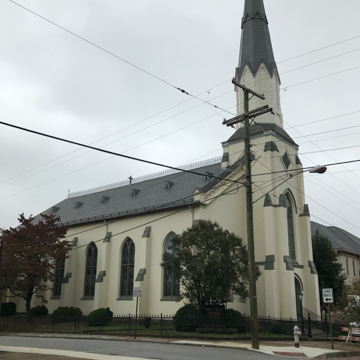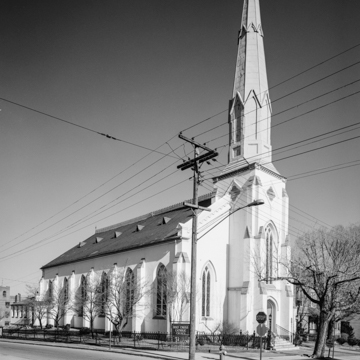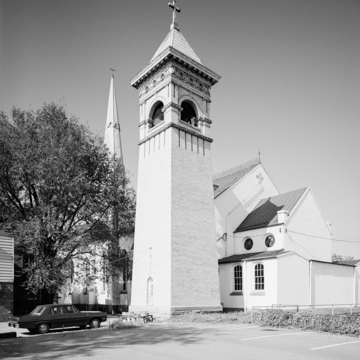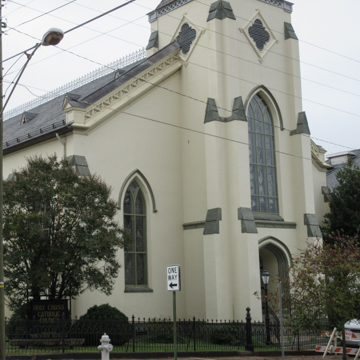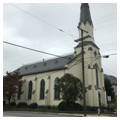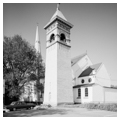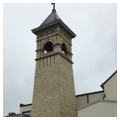Holy Cross, the oldest Roman Catholic church in the area, has its origins in a movement in 1829 to establish a church for the many Irish Catholics working on the James River and Kanawha Canal. This church, which replaced a smaller building on a different downtown site, was built as a simple rectangle with a tower and spire projecting from the facade. Gothic Revival in style, the church has cream-colored stuccoed walls with contrasting greenstone trim (one of the earliest known uses of this local material) on buttress caps and windowsills. In the 1980s a large, overly fussy addition was built to provide a new entrance and reception area, and the orientation of the sanctuary was reversed. Fortunately, the clean lines and masses of Forsberg's original exterior remain undisturbed. The addition also hid Frye's freestanding campanile from easy view. An engaging Romanesque Revival design in cream-colored brick with terra-cotta trim, it is now best seen from Court Street.
You are here
Holy Cross Catholic Church
1878–1879, Ludwig August Forsberg; 1898 campanile, Edward G. Frye; 1983–1988, Fauber Architects. 710 Clay St.
If SAH Archipedia has been useful to you, please consider supporting it.
SAH Archipedia tells the story of the United States through its buildings, landscapes, and cities. This freely available resource empowers the public with authoritative knowledge that deepens their understanding and appreciation of the built environment. But the Society of Architectural Historians, which created SAH Archipedia with University of Virginia Press, needs your support to maintain the high-caliber research, writing, photography, cartography, editing, design, and programming that make SAH Archipedia a trusted online resource available to all who value the history of place, heritage tourism, and learning.

